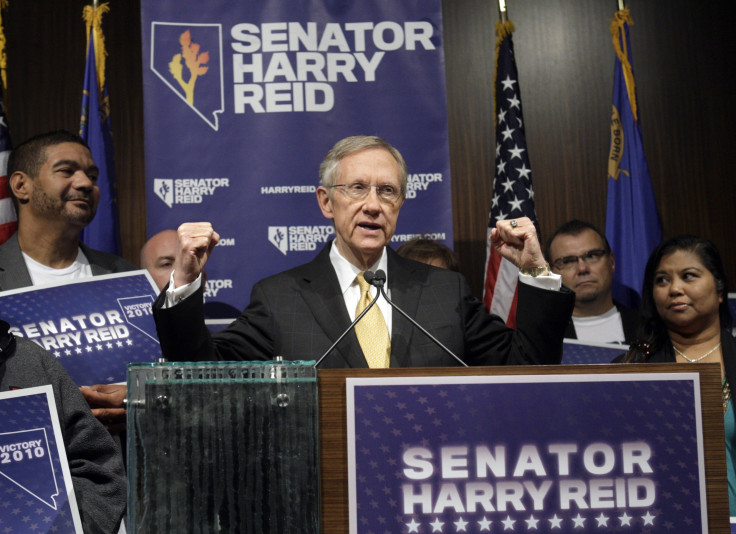Midterm Election 2014 Polls: Should We Trust Them?

In 2010, pollsters claimed Senate Majority Leader Harry Reid would be forced into retirement by tea party Republican Sharron Angle. She was up an average of about 3 percentage points in the late days of the campaign and had leads in all of the final eight polls heading into the Nevada election. In the end, however, Reid won by more than 6 percentage points on Election Day 2010.
The faulty polls surrounding Reid's re-election, the most important race in the last non-presidential midterm election, suggest polls showing Republicans will win back the Senate majority on Tuesday may not be anymore trustworthy this time around. Reaching potential voters who don't use landline phones or speak English still continue to befuddle pollsters this election year, making it difficult to create accurate predictions, pollsters said. Such voters are more likely to be younger and Latino, demographics that lean Democratic.
“Frankly, everyone is still trying to figure it out,” said Alex Patton, a Florida-based Republican pollster and owner of Ozean Media, referring to the ideal mix of landline, cellphone and online poll respondents needed to accurately represent likely voters in a specific race. “It’s definitely more challenging to get a good, random sample that you’re not having to weigh so heavily.”
Getting an accurate sample of Latino voters is partly why the pollsters got it wrong in Nevada, a state with the fifth-highest percentage of Latinos in the U.S. It also explains the polling inaccuracies in Colorado in 2010. GOP candidate Ken Buck had leads in nine of the final 11 polls and was tied with eventual winner and Democratic candidate Michael Bennett in the other two. This year, Colorado’s other Senate seat is up for election, with Democratic Sen. Mark Udall in a tight race with GOP candidate Cory Gardner. Gardner has a small but steady lead in the latest polls.
Colorado is a swing state and one of six that Republicans need to take back from Democrats to win control of the Senate on Tuesday. Polls show Republicans also winning in Arkansas, while races in Iowa, New Hampshire, North Carolina and Louisiana are close.
Pollsters generally call phone numbers randomly generated by a computer to reach a wide sample of voters. They call over several days, including on the weekends, to get a more diverse sample. Finding people willing to share their political views can also make it difficult to get an accurate poll of voters. For the Pew Research Center, for example, the response rate of a typical telephone survey was 36 percent in 1997 and just 9 percent in 2012.
Ipsos, the polling company that does surveys for Thomson Reuters, was one of the few firms to get it right in Nevada in 2010, but one of many to get it wrong in Colorado. Ipsos pollster Julia Clark said the company has turned to Internet polling to improve its accuracy from 2010. While the typical phone poll reaches 1,000 likely voters, an Internet poll can get 10 times as many respondents for a fraction of the cost. This year is the first time Ipsos is doing Internet-only polls in a midterm election.
“We got everything right in 2012 with this methodology,” Clark said. “We think we have control of the variables, but it’s new for us, too.”
Ipsos is trying to more accurately get a snapshot of the Latino electorate by targeting high-traffic websites with large Hispanic user bases, such as Telemundo, while implementing quotas. This method helps Ipsos reach both wealthy and low-income Latinos, who vote very differently.
“This is a game of demography as much as anything else,” Clark said. “We weren’t too shaken by our 2010 performance. Most of our polls were dead on.”
Patton said pollsters are treating the 2014 midterms as practice for the 2016 presidential election. "There is a lot of experimenting going on," he said.
© Copyright IBTimes 2024. All rights reserved.





















